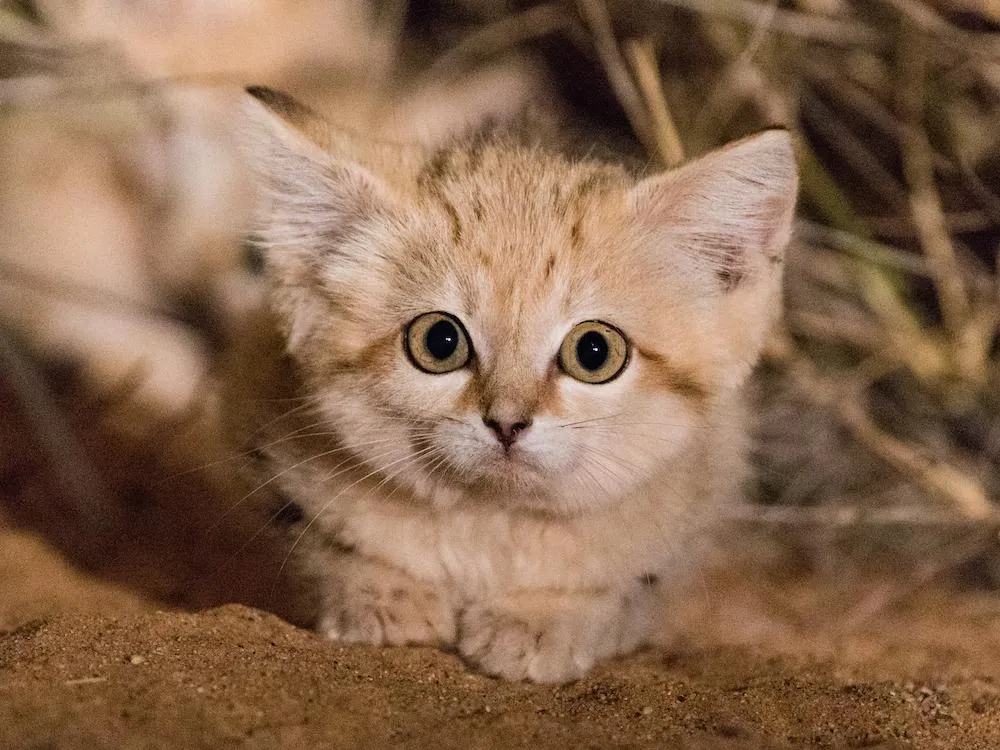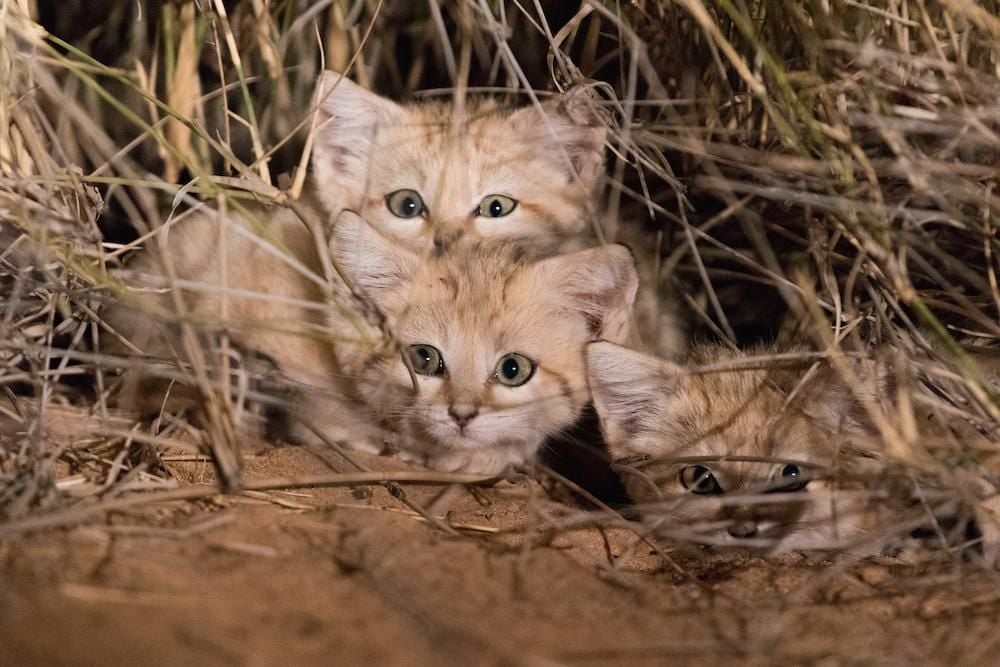Watch First Video of Sand Cat Kittens Romping in the Wild
The elusive kittens were documented sitting under a bush in the Moroccan Sahara last April
After four years of research and five expeditions, researchers from the wild cat conservation group Panthera France found and photographed three sand cat kittens in Morocco. It's believed to be the first time that the young of the elusive cats (Felis margarita) have been documented in their African range, Natasha Salmon at The Independent reports.
According to a blog post by Panthera researcher Grégory Breton, fellow researcher Alexander Sliwa and their local driver Elhaj set out into an undisclosed area of the Moroccan Sahara on the night of April 26, shining lights into the bushes looking for signs of the rare cats. After hours of searching, the researchers were rewarded with the sight of three pairs of eyes reflecting back at them from under a bush at 2 a.m. The eyes belonged to three sand cat kittens who had been stashed there by their mother as she set off to hunt during the night.
The team estimates the kittens were between six and eight weeks old. They photographed and video taped them for about an hour. They also installed camera traps in the area to record some of their natural behaviors. Later, the scientists located an agitated adult female sand cat, likely the kittens’ mother. They radio-collared her, which will add to the scant data about the Moroccan population of the species.
While sand cats have a wide range, living in the Sahara, the Arabian Peninsula and parts of central Asia, they are particularly stealthy and spend hot days in burrows only coming out at night to hunt desert rodents. Their footpads renders their tracks nearly invisible in the sand, their butter-colored coat is perfect desert camouflage, and in many cases they will crouch down and close their eyes when light is shined on them, making them particularly hard to track.
While these survival tools have long enabled the desert-dwellers to survive in their harsh environment, it also makes conservation difficult. Gathering an accurate count of the species proves challenging in its own right. Just last year, researchers in the United Arab Emirates made news when they announced they’d photographed sand cats in that country for the first time in a decade.

Breton reports that he began tracking sand cats in Morocco in 2013 when he and Sliwa heard that sightings of the cats were on the rise. After spotting one of the cats on their first expedition, they received permission to catch and radio-collar the secretive beasts. Since then, the team has spotted 29 cats in the desert and have been able to collar 13 of them. Preliminary results show that the cats range much more widely than previously believed and are picky about their habitat. There are also likely fewer cats than scientists have estimated.
After the team posted a video of the kittens online, the clip went viral. But the popularity of the cuddly creatures is also cause for concern. In some areas the cats are being captured and sold to animal collectors. In fact, so many people expressed an interest in getting their own sand cat after seeing the video, the team released a statement discouraging the practice. “Despite expressly stating in our video (at 2:42) that sand cats are a wild cat species adapted to desert and semi-arid conditions and should not be kept or interbred (to make hybrids with domestic house cats, something that unfortunately started before our field work),” they write, “some people have expressed the desire to catch or obtain one to keep them at home. We are strongly against this practice and it would lead to the direct opposite of our goal of creating awareness and protection for the species in the wild.”
The footage of the wide-eyed kittens will have to suffice. Try not to squeal when one lunges for a jerboa that runs across the frame in this video.
